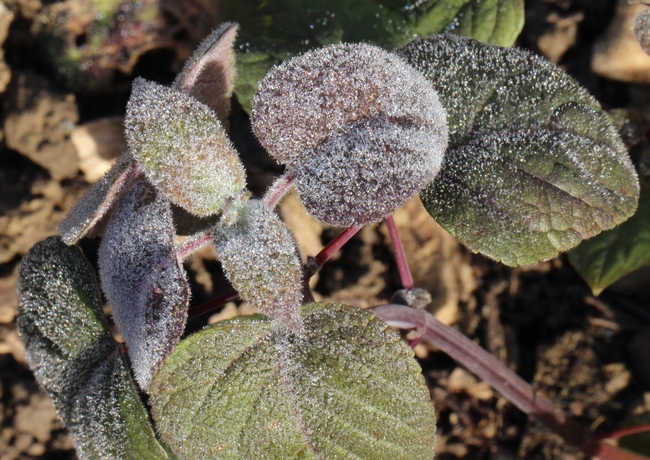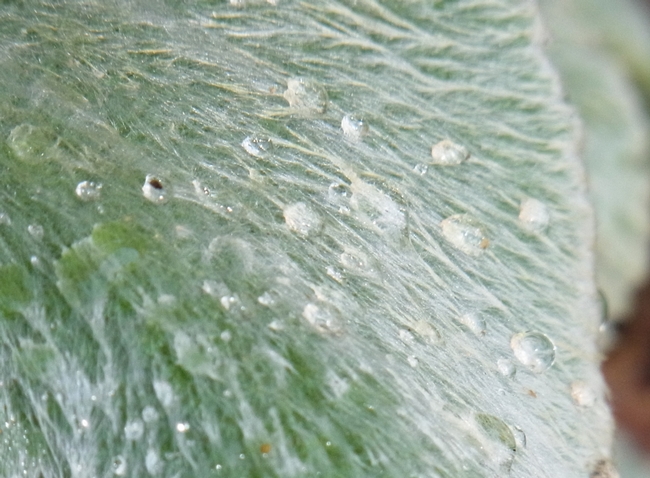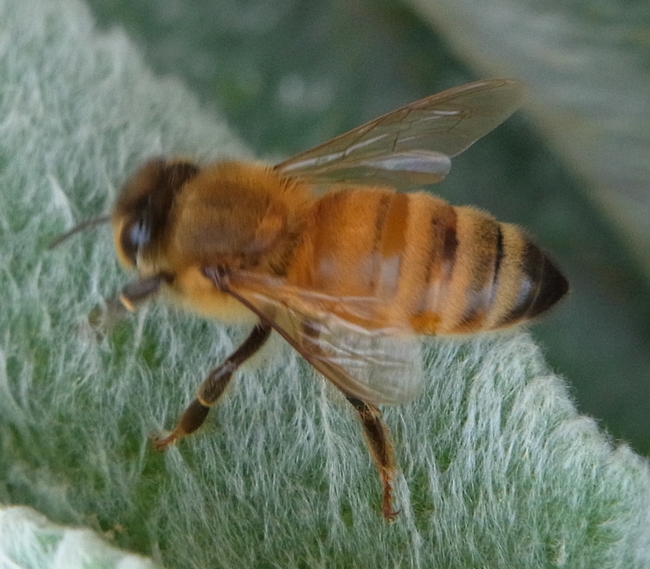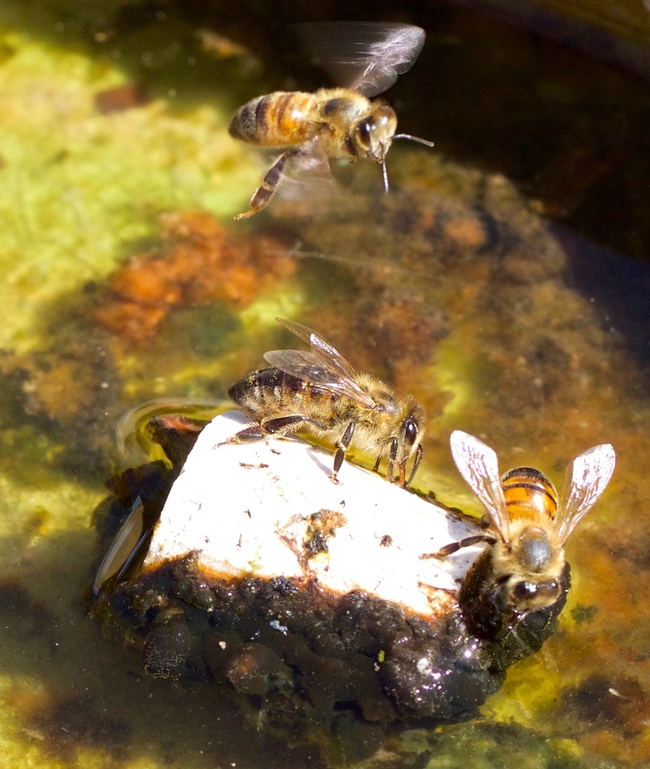- (Focus Area) Environment
- Author: Christine Casey
We've all seen them....garden catalogs or magazine articles with cute little bee houses hanging like birdfeeders, or entire fences made of nesting tubes for solitary bees. We even had them at the Haven -- for a while -- in the form of bee condos. The only problem? They often don't work, and may even do more harm than good.
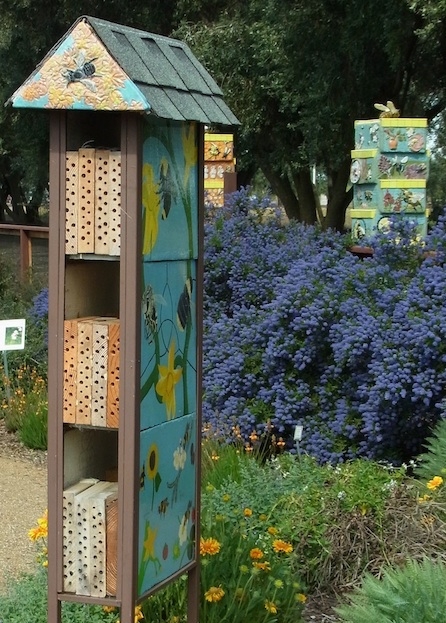
This is not limited to bee houses; previous investigation by Mihail Garbuzov and Francis Ratnieks of the University of Sussex found similar misinformation surrounding bee plant lists. They reviewed lists published for various regions worldwide, and found large variation in recommended plants, even within the same region. The science behind the lists, such as university research or repeated monitoring by trained observers, was also often unclear.
So what's a conscientious bee gardener to do?
Bee houses
I've written extensively about solitary bee houses on this blog. In the wild, bees nest in abandoned beetle galleries in trees. This environment is dark, stationary, and made of wood, and can inform our choice of solitary bee housing. Consider the following:
1. Bees will use a nesting tube diameter that corresponds to their body size. A good range of sizes for common bees is 3/16 to 5/16 inch. Tubes should be 4 to 6 inches deep; anything shorter will produce predominantly male bees.
2. Bees will not use houses or nesting blocks that move or are open in the back
3. A shaded entrance is important; even a piece of burlap draped over the top of the nest can work
4. Bee houses constructed of wood seem to be preferred
5. Position house with entrance out of the prevailing wind
6. Pathogens can build up in bee houses as they are used; they cannot be sterilized with bleach or other disinfectants. 'Cleaning' the used nesting tube with a drill bit or brush is likely to push pathogens into the wood. Houses (in the case of wood blocks) or individual tubes should be replaced after they are used.
7. Consider all dimensions. Bees may nest in hollow stems that are not horizontal.
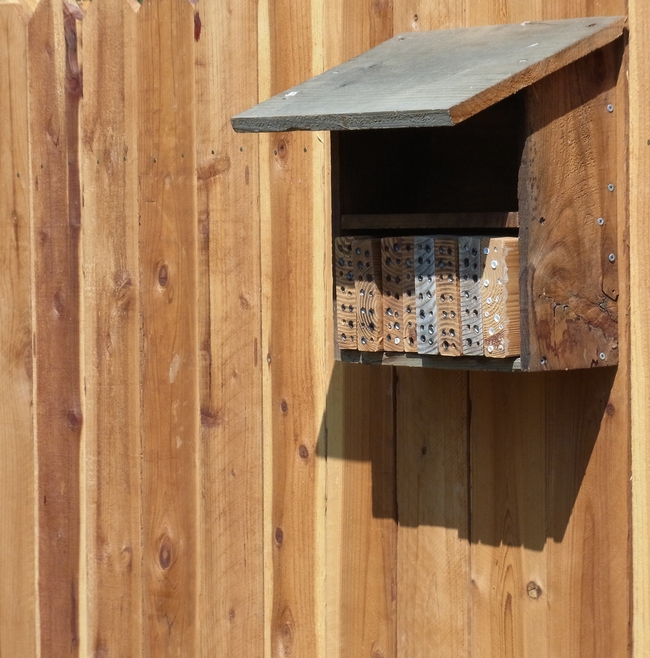
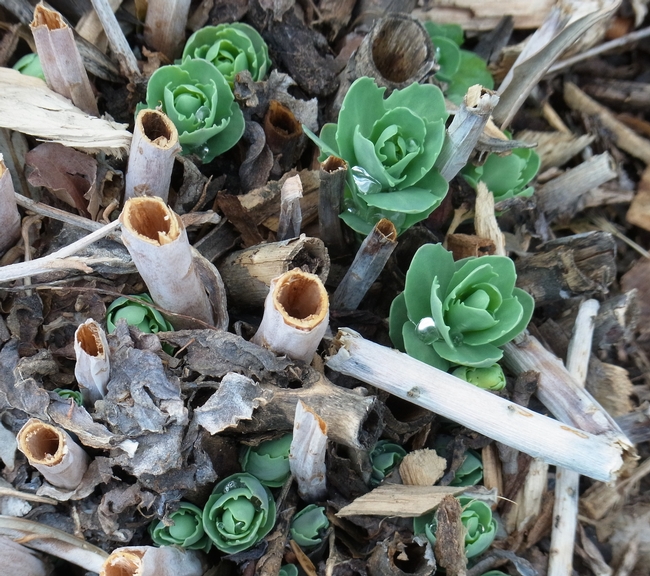
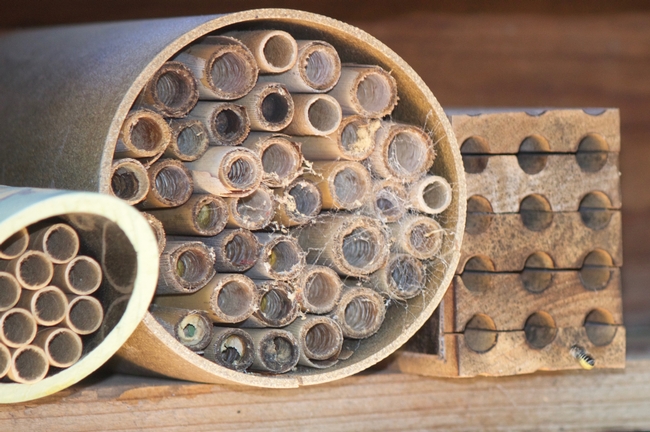
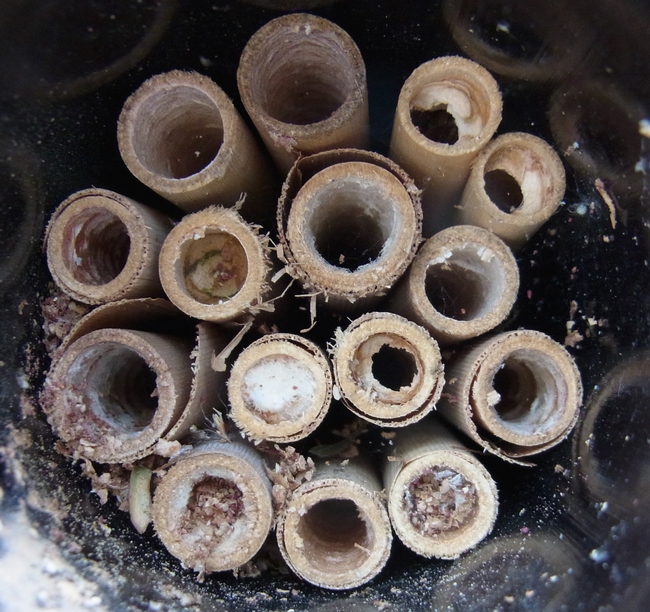
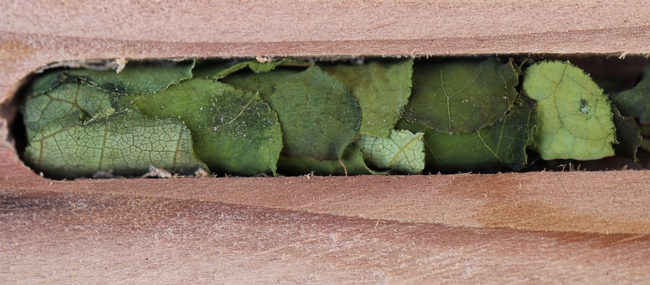
A fact sheet about building and using solitary bee houses is here.
Bee garden plant selection
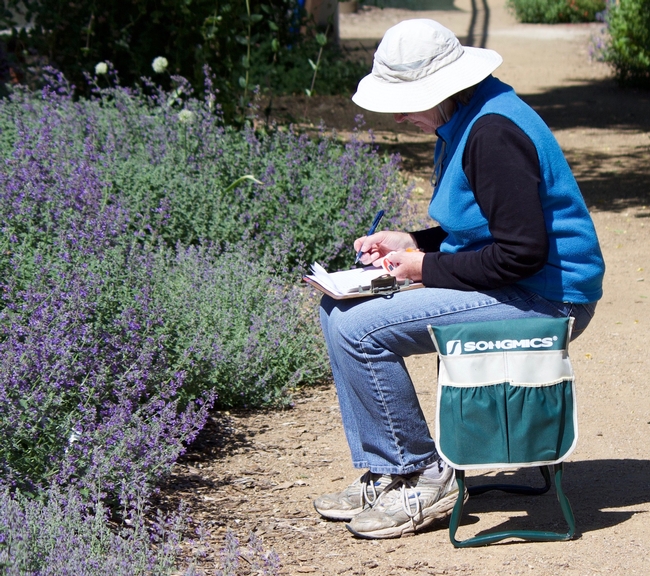
- Author: Christine Casey
The Haven is all about teaching, research, and outreach to save the bees. Our programs are consistently rated highly by our visitors; we've grown every year of our existence and would love for that to continue. For details about our past accomplishments, please see our annual reports: 2018, 2017, 2016, 2015, and 2014.
A grant that provided half of our support recently ended, and I am seeking your support to help keep these successful programs going.
What you can do:
1. Donate here. The Haven is supported solely by grants, donations, and volunteers. A generous Häagen-Dazs gift established the garden, but Häagen-Dazs does not provide ongoing support. Recent funding has come from the California Department of Food and Agriculture, the UC Davis College of Agriculture and Environmental Sciences, the USDA, and the California Center for Urban Horticulture.
Individuals and local clubs such as the Roseville Better Gardens Club and the Sacramento Area Beekeepers Association have also made much-appreciated donations.
If the 3500 people who've attended a tour, Haven event, or class so far this year each gave $10, we'd be covered for seven months. While large donations are great, many small donations are just as important.
2. Attend our fall fundraiser on September 21. Details will be posted soon on the Haven's web page.
Thank you. Together we can keep this unique garden going strong.
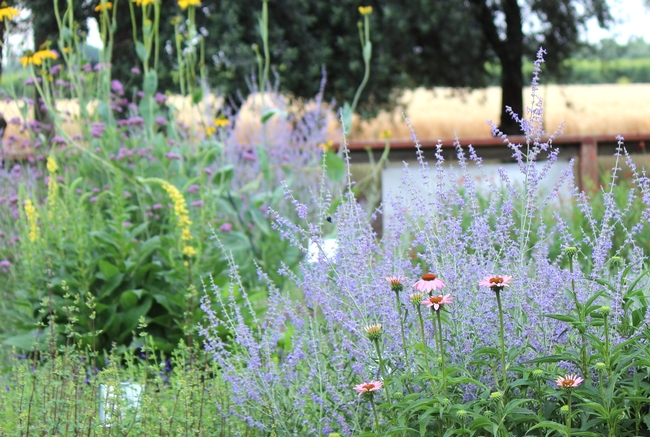
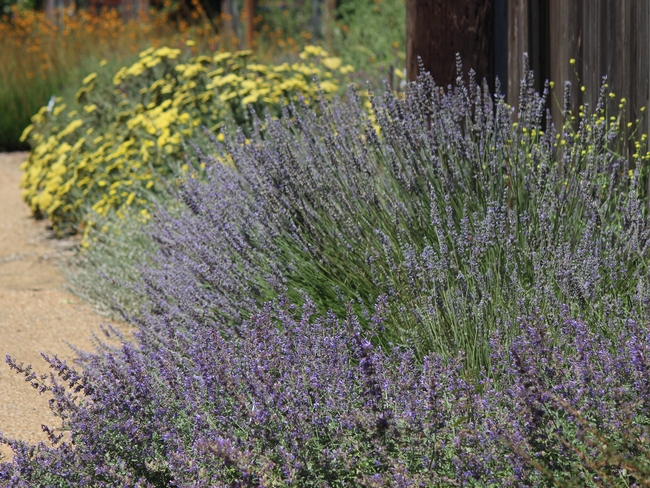
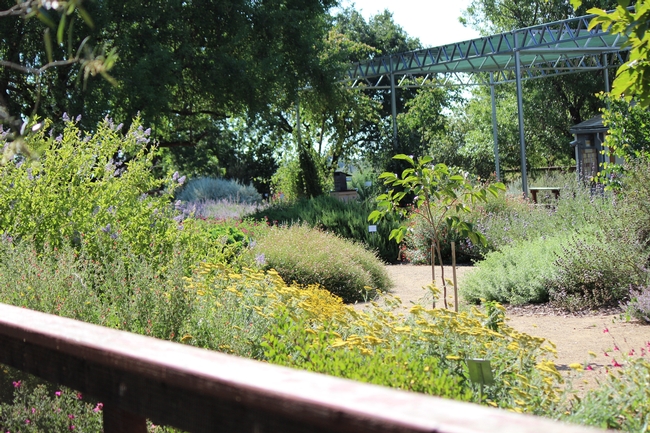
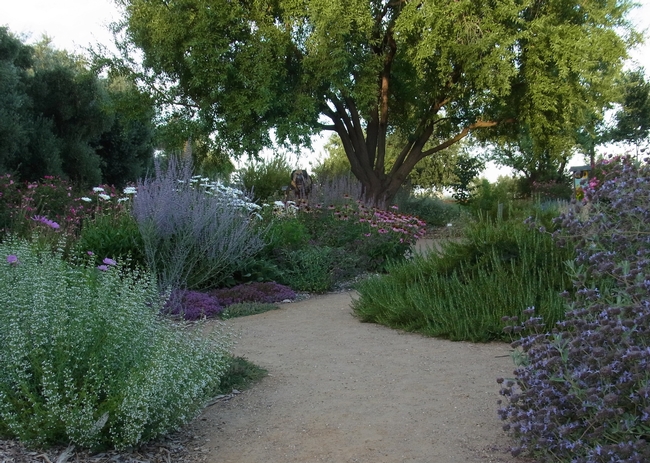
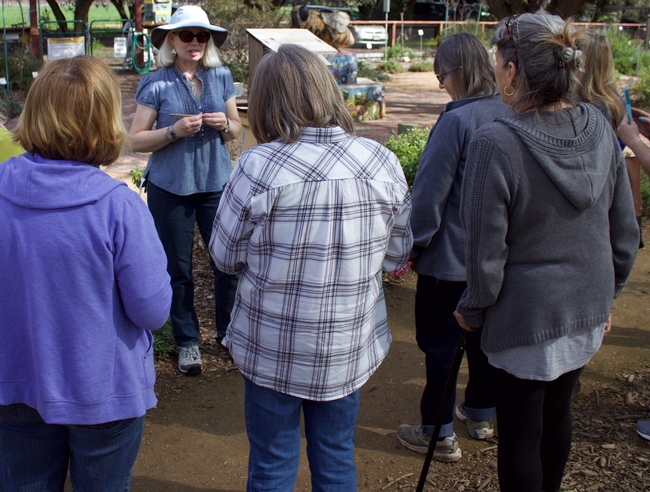
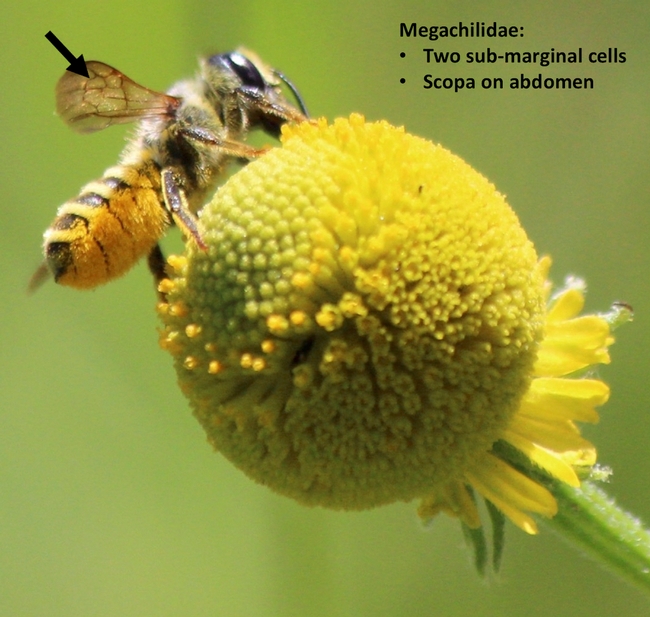
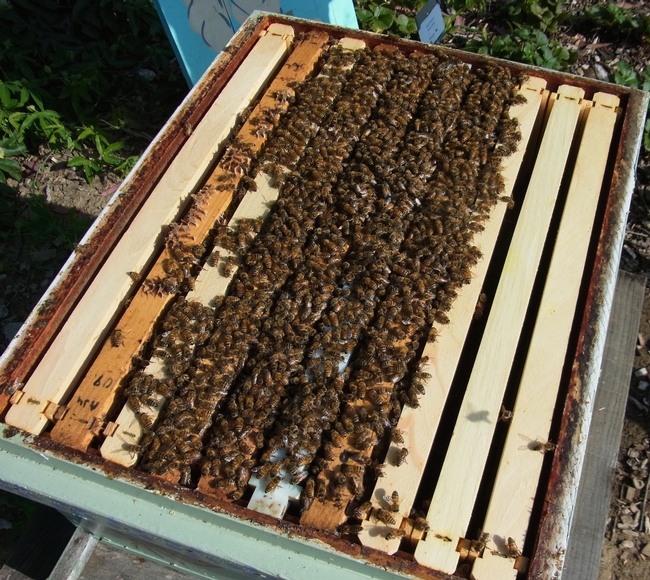
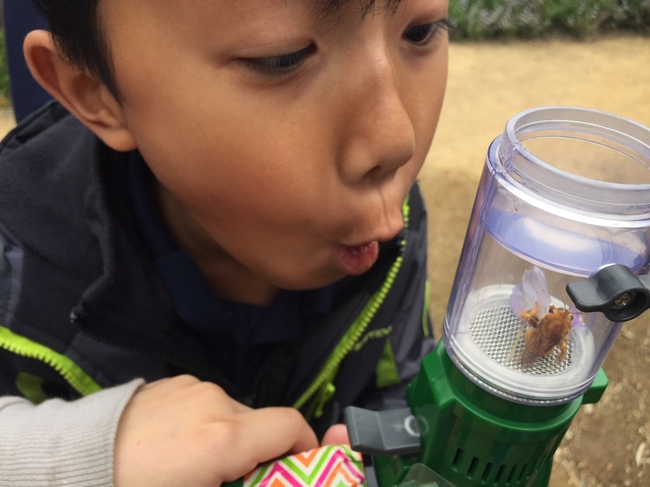
- Author: Christine Casey
I've had several questions recently about the Bambeco solitary bee house sold at Costco (they sell the Swiss Alps model), so I decided to head to my local store to check it out. While the price is amazing, the house has a few features that are not so ideal. For details on what makes a good solitary bee house, see here and here.
What's good: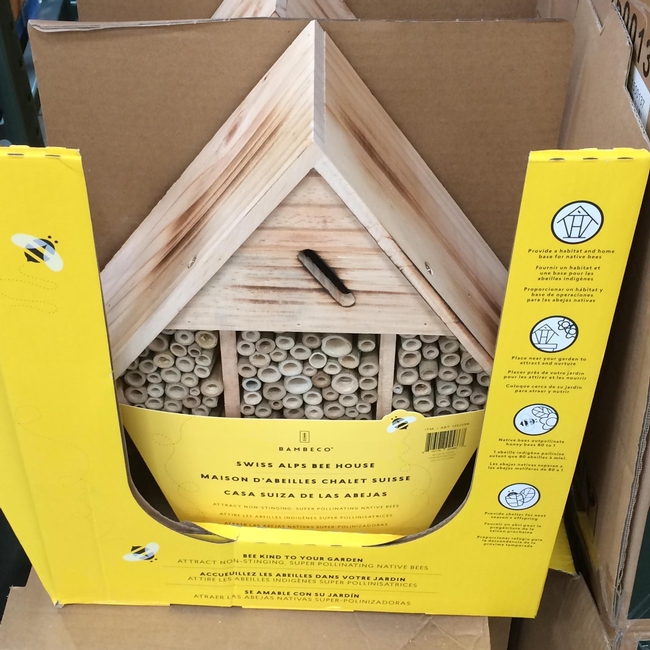
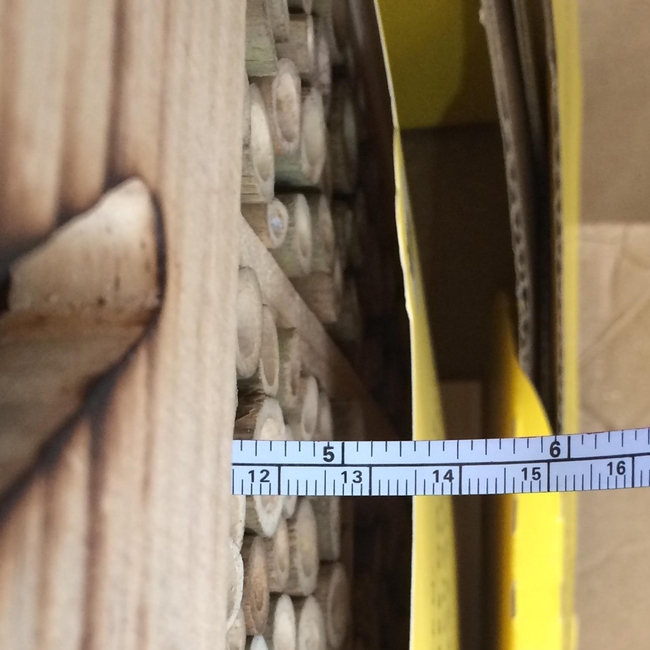
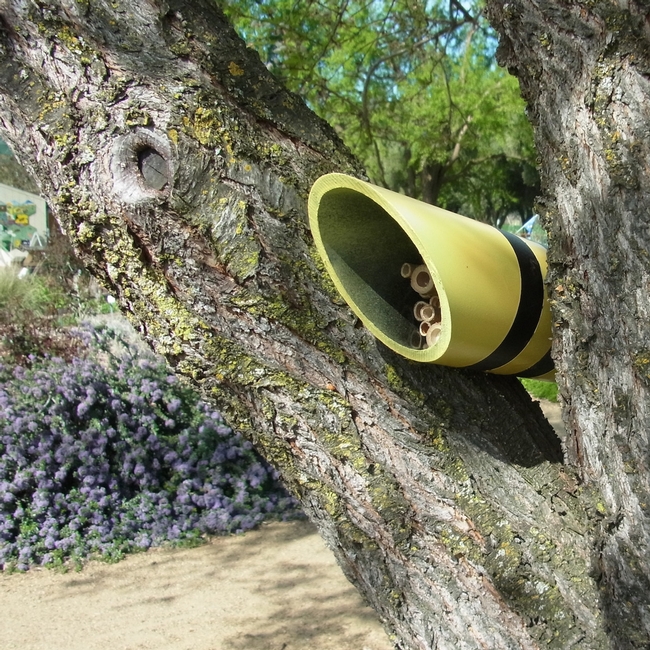
The depth. At 4.5 inches deep, it is sufficiently deep to allow the production of female and male bees.
What's not so good:
The nesting tube diameter. While the variety of diameters is good, solitary bees need tubes from 3/16 to 5/16 in diameter. While other arthropods, such as spiders, may use the larger tubes, they will not be used by bees.
Limited protected overhang. The nesting tubes should be placed so that the entrance has a bit of protection. That's why we make our houses at least an inch longer than the tubes.
The nesting tubes are glued in place. Once a tube is used it should be replaced to help prevent the build up of pathogens.
March 13, 2019: winter update
The bee house is not holding up well to the winter weather. Here's a photo showing some superficial mold as well as separation of the sides from the base. Note that I added extra protection by attached redwood fence boards to increase the cover of the roof.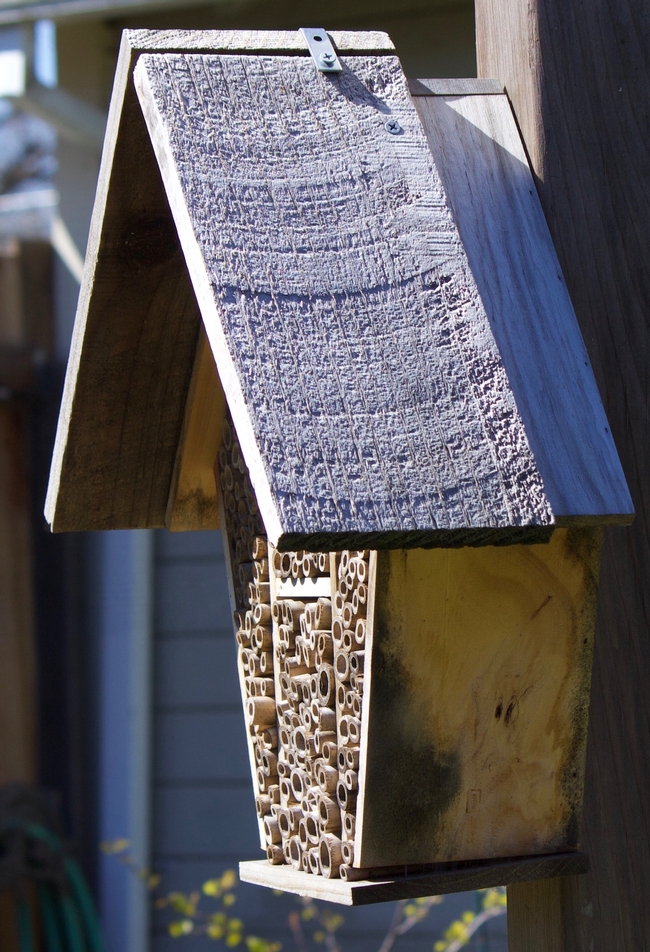
March 27, 2019: comments on the 2019 model
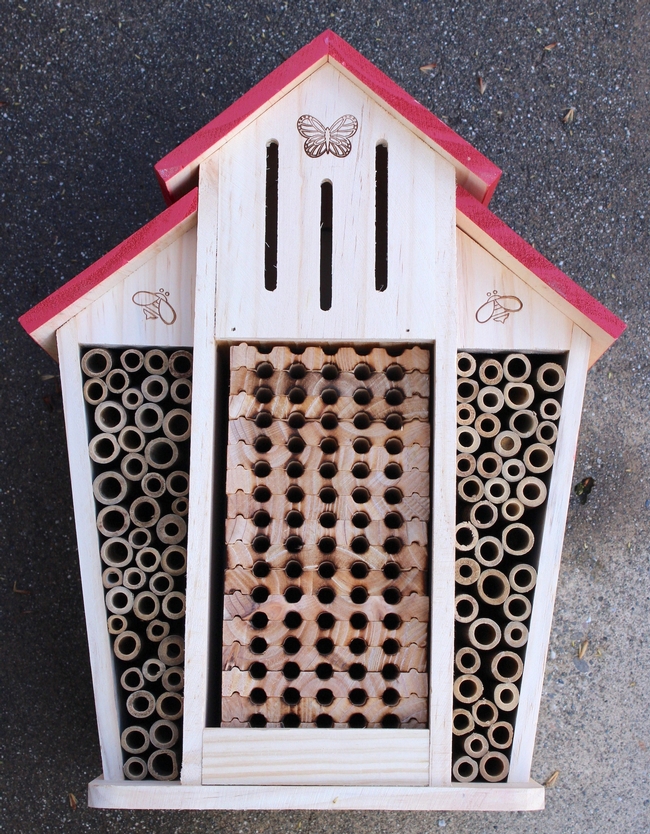


Update July 1, 2019
The Bambeco bee house shown above is not holding up well to the weather. After three months outside (there was one week of rain during this period), the paint on the roof is peeling.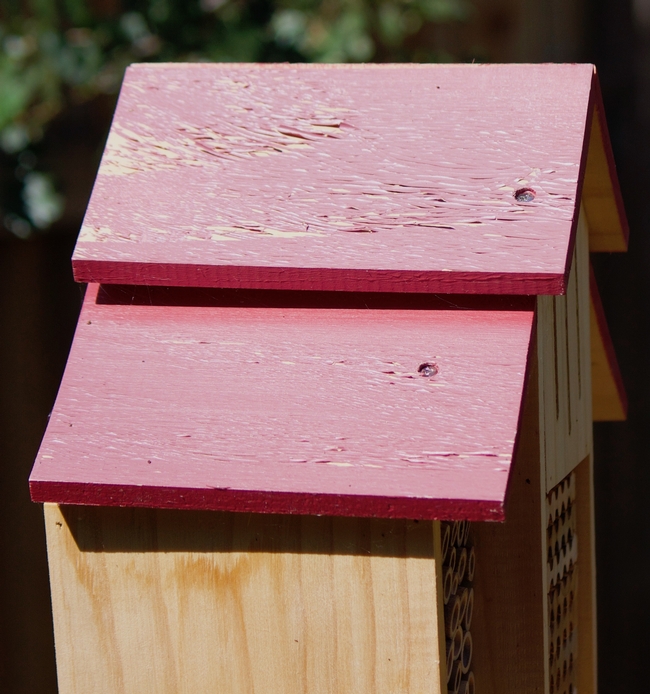
Update October 7, 2019
I have discarded the 2019 bee house. The paint continued to peel and the wood on the roof started to split. I removed the wooden blocks in the front of the house and will use these next year. For folks who have been asking what a correctly designed bee house looks like, here is an example of the one we sell at the Haven. 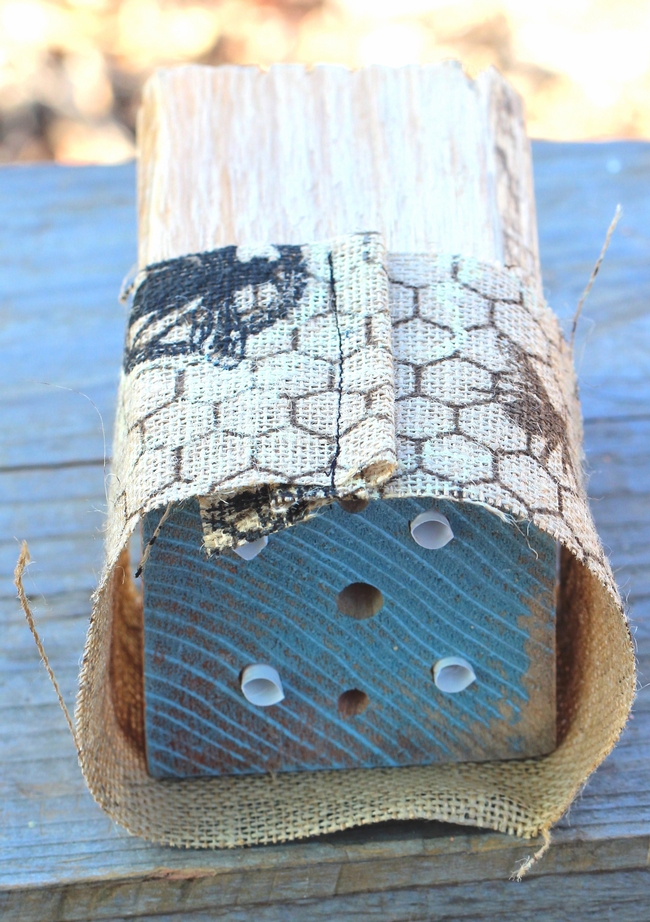
What makes it correct:
1. It's made out of redwood; studies have shown that bees prefer to nest in wood.
2. The depth and diameter of the nesting tubes are correct. The holes are drilled 5 inches deep, and the openings range from 3/16 to 5/16 inch in diameter.
3. Paper straws have been inserted into the 1/4 inch diameter holes (this is the only size straw available). This means that the tube can be cleaned out after use. I suggest plugging the others with wood filler after use so that they are not re-used.
4. The front of the block has a pattern to it. This may help the bees recognize their individual nest entrance. There is also evidence that a blue front is more attractive to one of the mason bee species.
5. The block has a piece of burlap shading the entrance. Bees are more likely to use the blocks if the entrance is shaded.
- Author: Christine Casey
Spring is here, and planting is underway in bee gardens throughout California. And planting, especially if you're creating a new garden, means you are thinking about design. In this series of posts I will cover various aspects of garden design -- such as color, texture, shape, and size -- from the perspective of what bees need. Based on research, this information should provide a solid foundation for a successful bee garden.
This post will focus on color. An understanding of color theory is helpful in creating an aesthetically pleasing garden for us, but color is also relevant for bees. All color wheel screen shots shown here are from the Adobe web page.
1. Complementary colors. Colors opposite each other on the color wheel are complementary; this is one of the easiest ways to select colors. Using opposite colors together makes each color appear more vibrant.
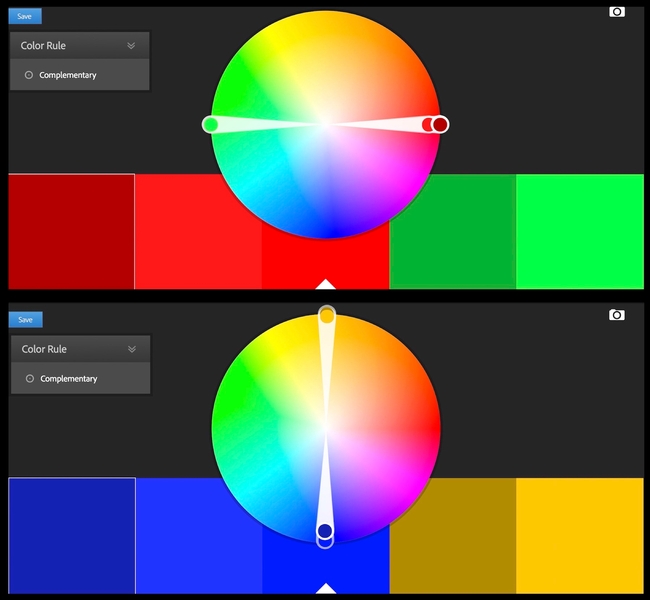
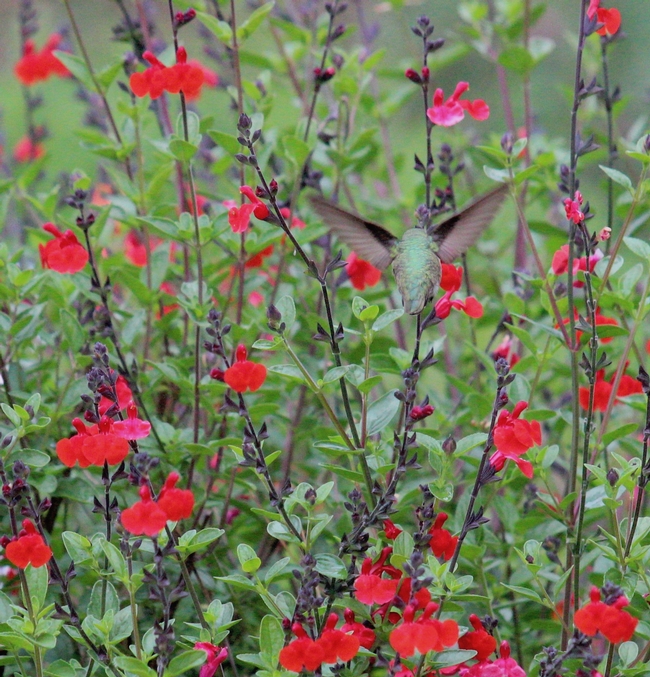
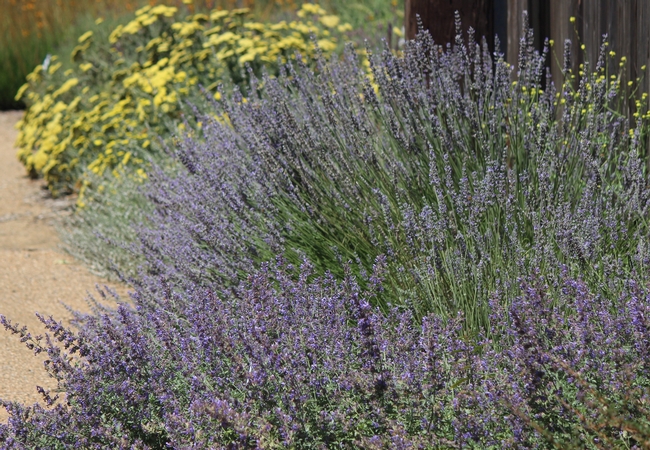
2. Analogous colors. Colors adjacent to each other on the color wheel are analogous; using these colors can be a bit trickier, especially with hot colors like oranges and reds. One way to combine these effectively is to mix in white, as is done here with white gaura in this planting of the analogous colors pink (echinacea) and purple (tall verbena).
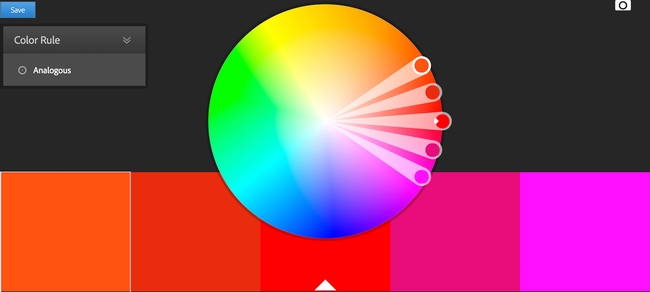
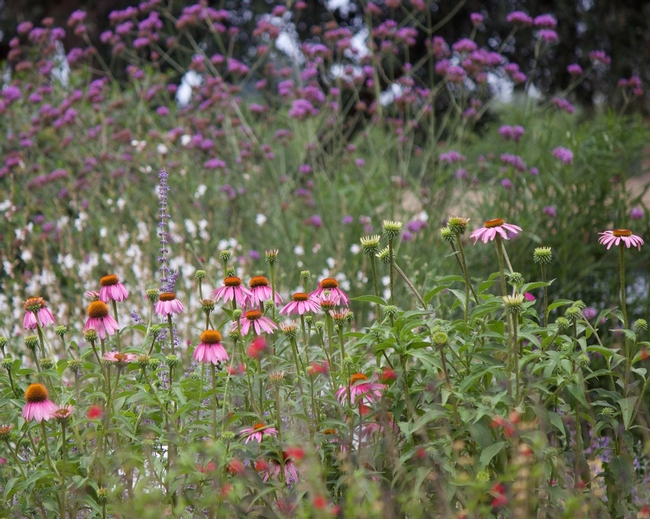
3. Shades of one color. This is the easiest combination to pull off. Cool colors (blues and purples) tend to create a calming effect and make the garden appear larger, while warm colors (reds and yellows) create energy and make the garden appear smaller. Here is an example of shades of a cool color (purple) used in the Haven:
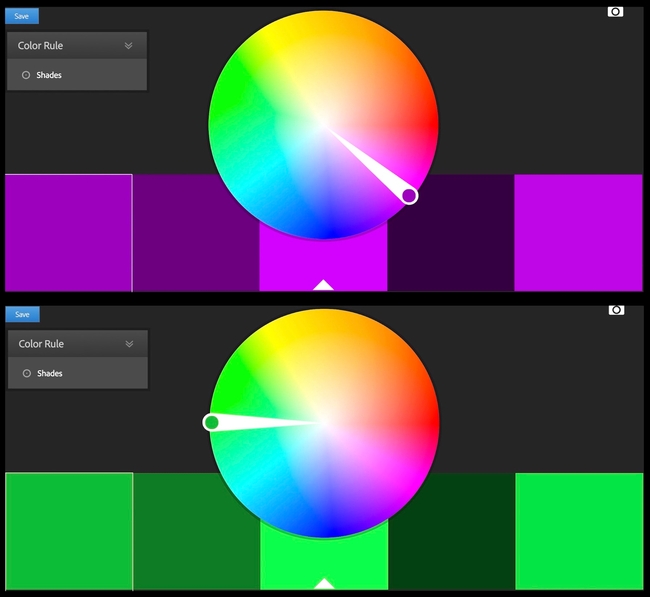
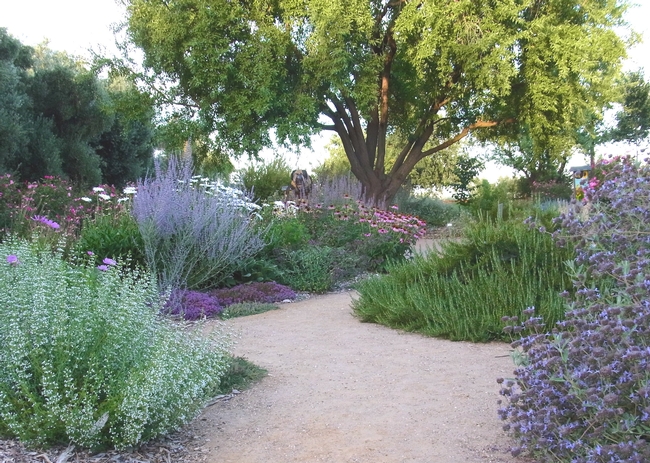
So how do we meld this with bee biology? Here are some pointers:
1. Bees see color differently than we do. They don't see red at all, and see purple very well....there's a reason we have so many purple flowers in the Haven. Here's an example: the first photo shows a flannel bush flower in daylight, while the second shows it under ultraviolet (UV) light, which is the light spectrum where bees see. The 'invisible' nectar (to us) is a bright blue beacon to bees under UV light.
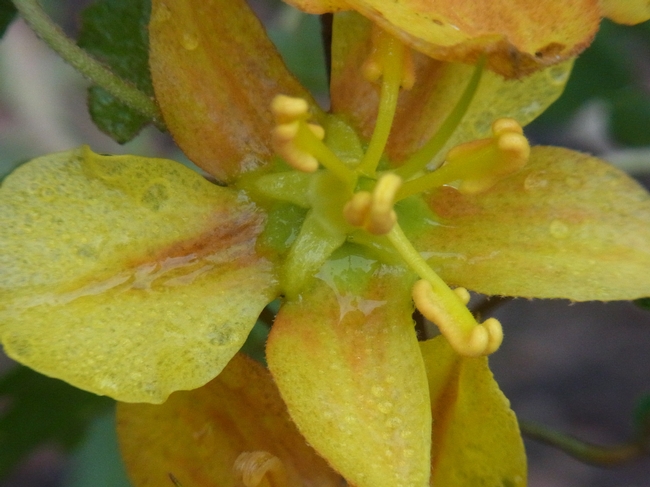
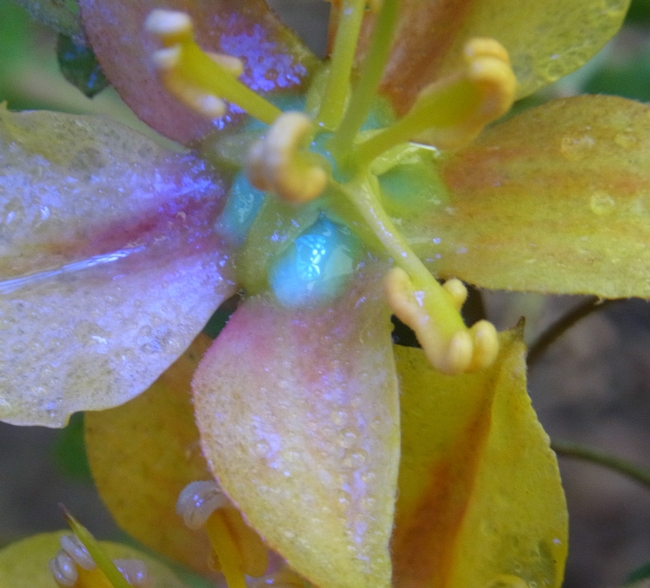
But, you might be thinking, I see bees on red flowers all the time! Well bees can use more than color to find a flower, which brings us to scent....I'll discuss this in a future post.
2. Does color pattern in the garden matter to bees? One study (Proc. R. Soc. London B. 2003. 270: 569-575) found that honey bee foraging distance was longer in simple landscapes; this makes sense because honey bees do best with a varied diet and need to travel further to find a mix of flowers in a simple landscape. Conversely, waggle dance activity was greater in complex landscapes because the patches of plants were more variable -- high quality and low quality plants were mixed together. So it's also important to ensure a good mix of high-quality bee plants in appropriately-sized patches.
3. Another aspect of flower color often not considered is patterns on the flowers themselves. Called nectar guides, these serve to guide bees into the nectary. Of course they pick up and deposit pollen as they do this, thereby pollinating the flower.
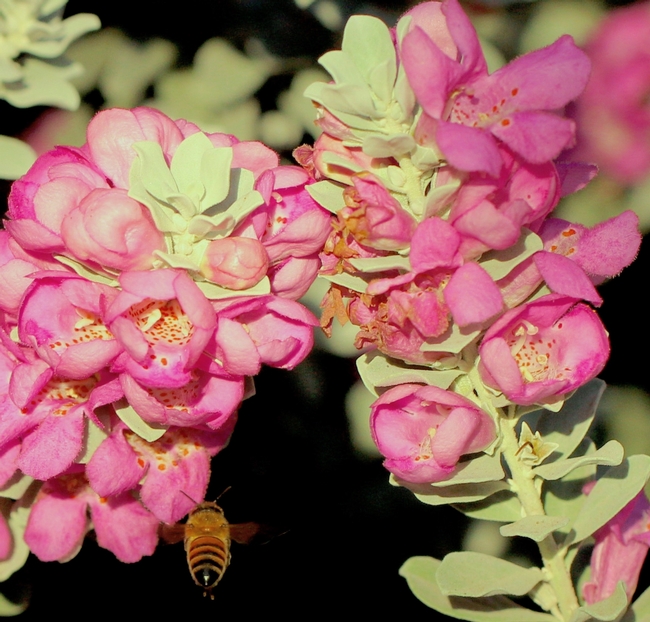
For lots more detail about how bees see, check out this article. My next post will cover shape, size, scent, and texture. I'll finish with suggested plant lists and planting plans. Here's to your successful bee garden!
- Author: Christine Casey
Like all animals, bees need food, water, and shelter. Most insects get all the water they need from their food: think of a caterpillar that feeds on plant leaves, which are mostly water. However, the pollen and nectar that constitute a bee's diet don't contain much moisture, so bees must have a water source. As the weather warms and foraging activity picks up, honey bees will start looking for water as well as pollen and nectar.
Honey bees are good learners, and once they find a water supply they will return regularly. Water is so important that foragers will do the waggle dance to direct hive mates to water sources just as they will for flowers. So to direct bees to the water you want them to use, it's important to provide attractive sources early in the year (i.e. now!) so they will learn these rather than the places you don't want them, such as a swimming pool.
So just what is a good water source? Here are some guidelines:
Accessible to bees
Bees can't swim! They must be able to stand where it's dry and drink. Good systems include shallow bird baths or pot bottoms filled with water and pebbles or corks. These allow the bees to stand and drink; they'll generally dry out too quickly for mosquitoes to be an issue. If your water source is a pond, Bacillus thuringiensis israelensis may be used for mosquito control as it's harmless to bees. At the Haven, we create 'pots' using coiled soaker hoses. Connected to a timer-controlled water supply, these are a great way to efficiently deliver water in bee-sized droplets. I provided construction details for this in a previous post.
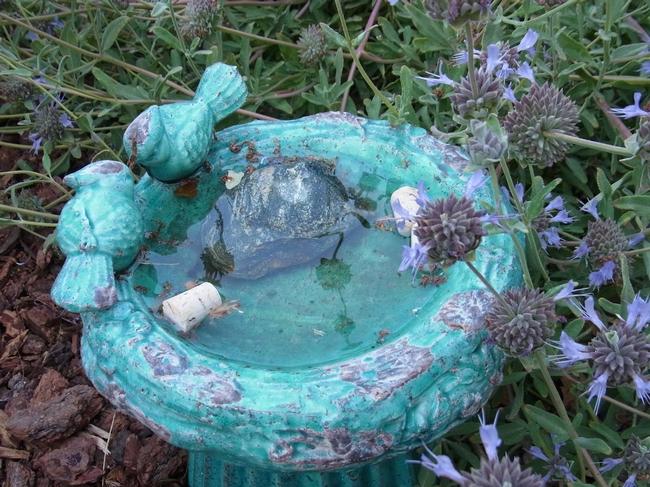
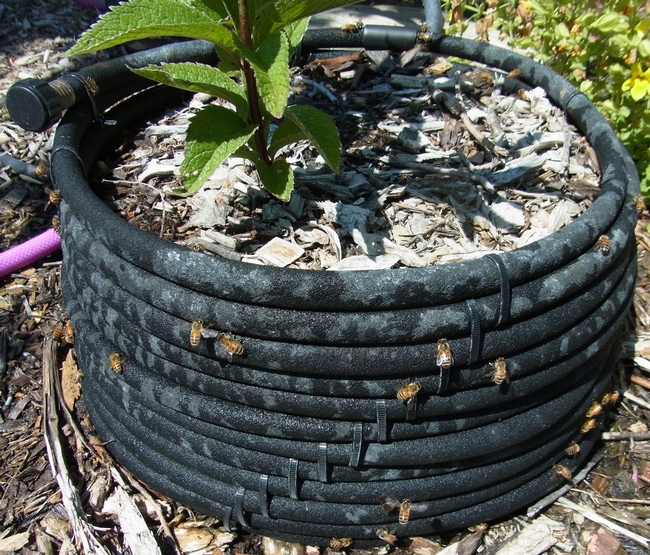
Nutritious for bees
Water needs to be nutritious? Surely bees need the same fresh, clean water that you or I might want? It turns out that water is an important route for bees to obtain essential nutrients. Butler (J. Experimental Biology, 1940, (17):253-261) coined the term 'dirty water' to refer to water containing nutrients. Probably because in the agricultural areas of Great Britain where he observed bees, they frequented areas we might consider undesirable. As he stated in his paper,
"It is well known that honeybees tend to collect water from many undesirable sources, such as rain-water gutters that are choked with decaying organic matter, on the puddles that form on the top of cow dung and sewage effluent, rather than from a source of clean water provided in the apiary for their use."
He performed chemical analysis of the water at these sites and found it to be high in various nutrients that were leaching from the organic material. Water with high sodium chloride (yes, table salt) seemed to be the source preferred by bees. A previous study (Hertz, Z. Vergl. Physiol., 1935, (21):463) suggested that bees used olfactory cues to located these preferred sources. To test this, Butler washed preferred water using activated charcoal and found that bees were unable to distinguish between the washed preferred water and distilled water. This confirmed Hertz' theory that odor cues are used to locate mineral-rich water. The take home from this? Don't place your water source near highly scented plants, and let leaves and algae sit in your bee water source.
More recent work by Bonoan et al. (Ecol. Entomol., 2017, (42):195-201) looked at drinking water as a source of micronutrients for bees. Honey bees were allowed to forage freely in a meadow and were provided water sources with varying chemical components. As with Butler, during much of the year they found that bees had a strong preference for sodium-rich water, regardless of plant diet. In the fall, however, when pollen is scarce, they showed a preference for water sources containing calcium, magnesium, and potassium, all of which are found in pollen. This demonstrated that honey bees have the ability to switch water sources to compensate for dietary nutrient deficiencies.
Plants as water sources
I mentioned earlier that the plant products consumed by bees -- pollen and nectar -- aren't good sources of water. Plants can be an indirect source, though. In a garden with overhead irrigation or large amounts of dew, water can sit for several hours on leaves that are covered with dense hairs. I've shown two examples from the Haven below. Since overhead watering can promote disease and waste water, try giving plants like these a quick wash from the hose so they'll do double duty as nectar and water sources.
